Decrease in brightness at heating at LED lamps
When testing LED lamps, I found one feature in them. In almost all lamps, the brightness decreases after warming up.
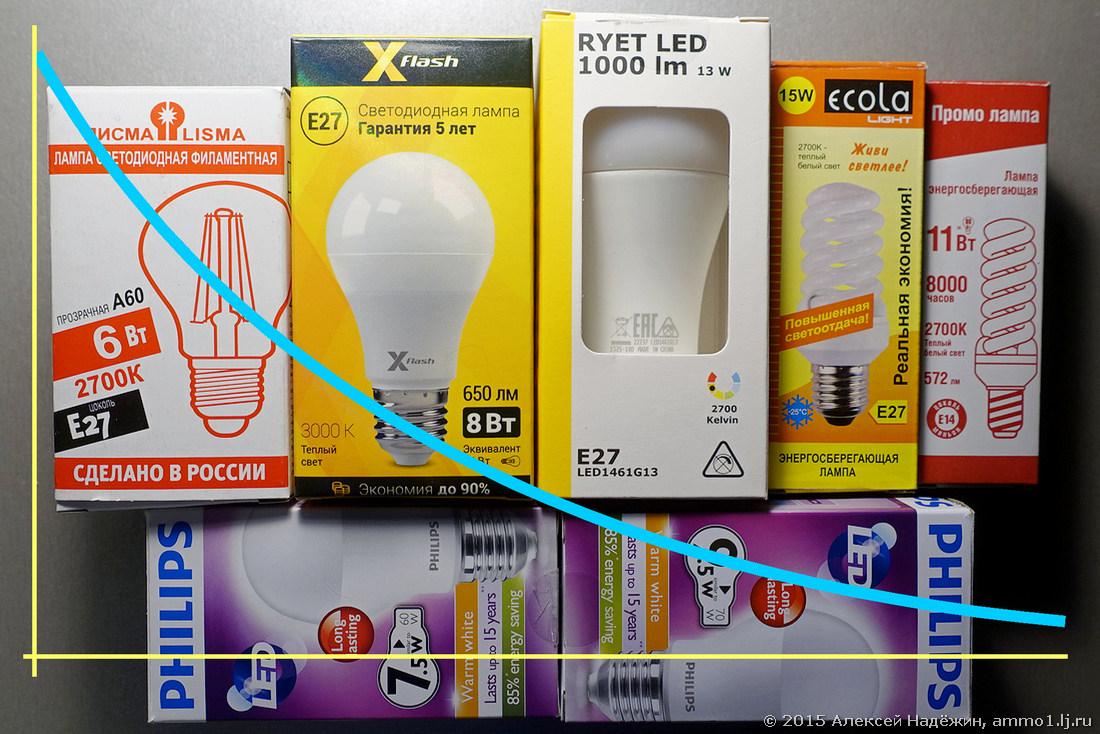
5-30 minutes after switching on, the luminous flux of the lamps decreases by 11-12%. When the lamp has warmed up, its brightness does not change anymore.
The fastest heating lamps on LED threads. A 6-watt Lisma SDF-6W lamp loses 8% brightness a minute after turning on, another 3% after five minutes, and after ten minutes it starts to shine with a brightness of 88% of the original.
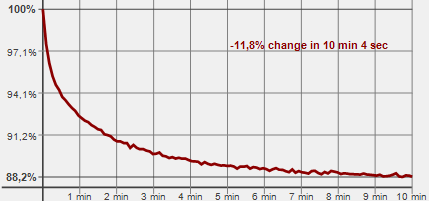
Conventional LED lamps warm up more slowly. So, an 8-watt X-Flash 44788 XF-E27-A60-P-8W-3000K-220V lamp in 20 minutes gradually loses 11.5% brightness and then shines with a constant brightness of 88.5% of the brightness at the moment of switching on.
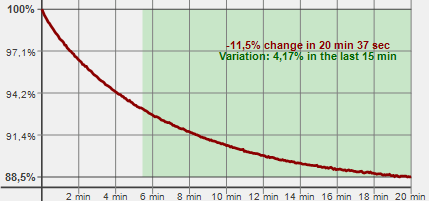
Massive and powerful 13 watt lampIKEA RYET 703.115.98 LED 1461G13 smoothly loses 12.1% brightness in 30 minutes.
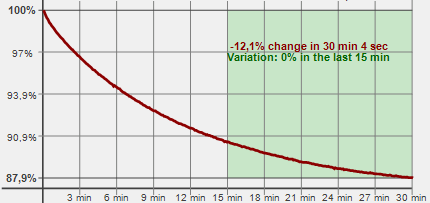
But there are exceptions to any rule. It was found that the 7.5-watt Philips 871829175275200 lamp behaves exactly the opposite and for it in the first five minutes after turning on the brightness gradually increases by 2%.

I tested this lamp twice and the result was confirmed. Moreover, a very similar 9.5-watt Philips 871829175279000 lamp , like other LED lamps, loses brightness, though not as much as ordinary lamps - 7% in 10 minutes.

At the same time, I tested two energy-saving compact fluorescent lamps. As you know, all such lamps gain brightness after switching on. The light brightness of the Ecola Light Spiral EHL / 15W / E27 / 2700K / 220-240V / 50-60Hz lamp increases by 53% in 30 seconds.
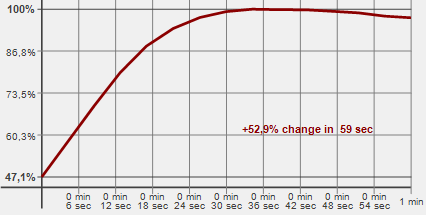
The Navigator NCLP-SF-11-827-E14 lamp gains 40% brightness in 30 seconds.

I note that testing took place at a temperature of 22 °. At low temperatures, fluorescent lamps flare up much more slowly and can reach full brightness in only a few minutes.
I knew that with LED lamps, the brightness decreases during heating, but it was a discovery for me that the light flux decreases so significantly and this decrease can take quite a while. The first tests for Lamptest.ru I spent with the lamp warming up for one minute. Now I understand that this is very small and the test results of the first lamps were overestimated. I did the subsequent tests with a 10-minute warm-up, but now I see that this is not enough and you need to warm up the lamps for at least half an hour.
However, there is nothing wrong with the 10 percent measurement error. Let me remind you that when the mains voltage changes by only 10 volts, the brightness of ordinary incandescent lamps changes by the same 12%: geektimes.ru/company/lamptest/blog/265474

5-30 minutes after switching on, the luminous flux of the lamps decreases by 11-12%. When the lamp has warmed up, its brightness does not change anymore.
The fastest heating lamps on LED threads. A 6-watt Lisma SDF-6W lamp loses 8% brightness a minute after turning on, another 3% after five minutes, and after ten minutes it starts to shine with a brightness of 88% of the original.

Conventional LED lamps warm up more slowly. So, an 8-watt X-Flash 44788 XF-E27-A60-P-8W-3000K-220V lamp in 20 minutes gradually loses 11.5% brightness and then shines with a constant brightness of 88.5% of the brightness at the moment of switching on.

Massive and powerful 13 watt lampIKEA RYET 703.115.98 LED 1461G13 smoothly loses 12.1% brightness in 30 minutes.

But there are exceptions to any rule. It was found that the 7.5-watt Philips 871829175275200 lamp behaves exactly the opposite and for it in the first five minutes after turning on the brightness gradually increases by 2%.

I tested this lamp twice and the result was confirmed. Moreover, a very similar 9.5-watt Philips 871829175279000 lamp , like other LED lamps, loses brightness, though not as much as ordinary lamps - 7% in 10 minutes.

At the same time, I tested two energy-saving compact fluorescent lamps. As you know, all such lamps gain brightness after switching on. The light brightness of the Ecola Light Spiral EHL / 15W / E27 / 2700K / 220-240V / 50-60Hz lamp increases by 53% in 30 seconds.

The Navigator NCLP-SF-11-827-E14 lamp gains 40% brightness in 30 seconds.

I note that testing took place at a temperature of 22 °. At low temperatures, fluorescent lamps flare up much more slowly and can reach full brightness in only a few minutes.
I knew that with LED lamps, the brightness decreases during heating, but it was a discovery for me that the light flux decreases so significantly and this decrease can take quite a while. The first tests for Lamptest.ru I spent with the lamp warming up for one minute. Now I understand that this is very small and the test results of the first lamps were overestimated. I did the subsequent tests with a 10-minute warm-up, but now I see that this is not enough and you need to warm up the lamps for at least half an hour.
However, there is nothing wrong with the 10 percent measurement error. Let me remind you that when the mains voltage changes by only 10 volts, the brightness of ordinary incandescent lamps changes by the same 12%: geektimes.ru/company/lamptest/blog/265474
